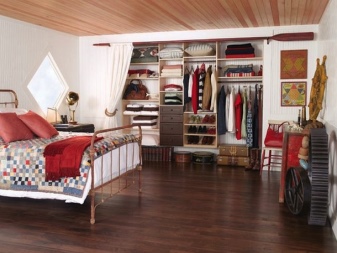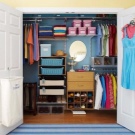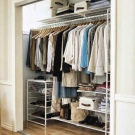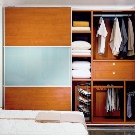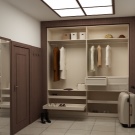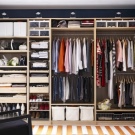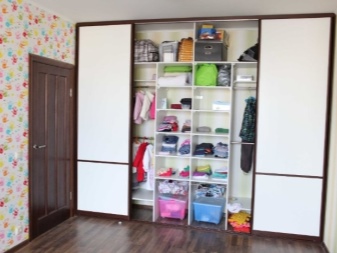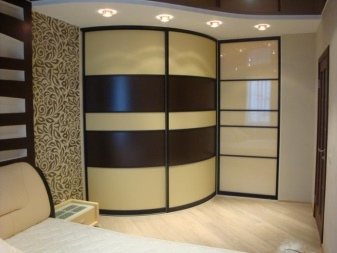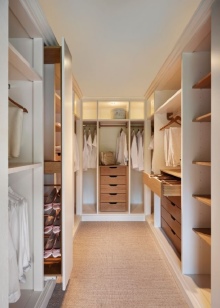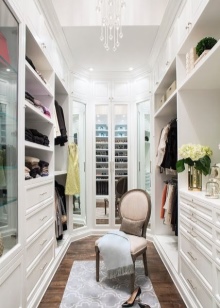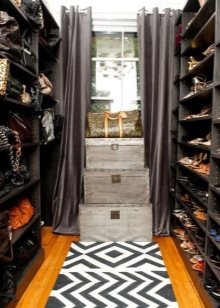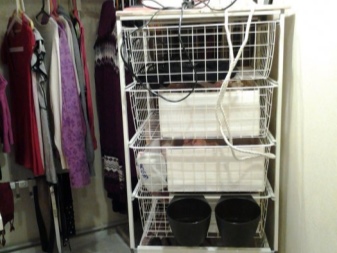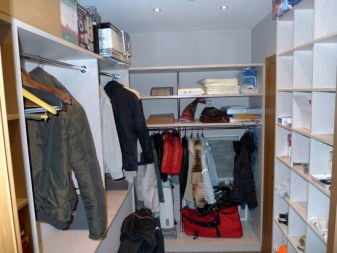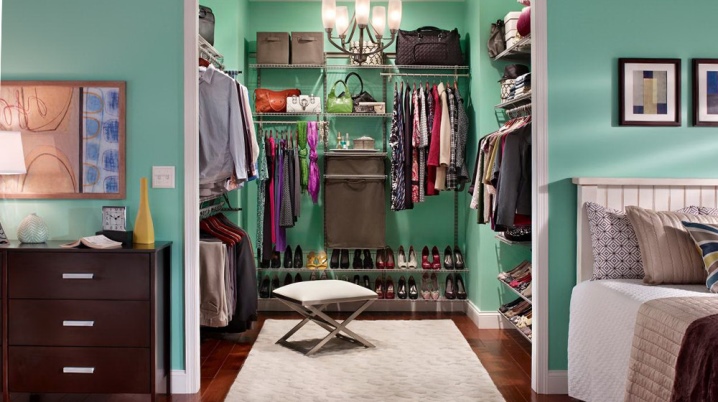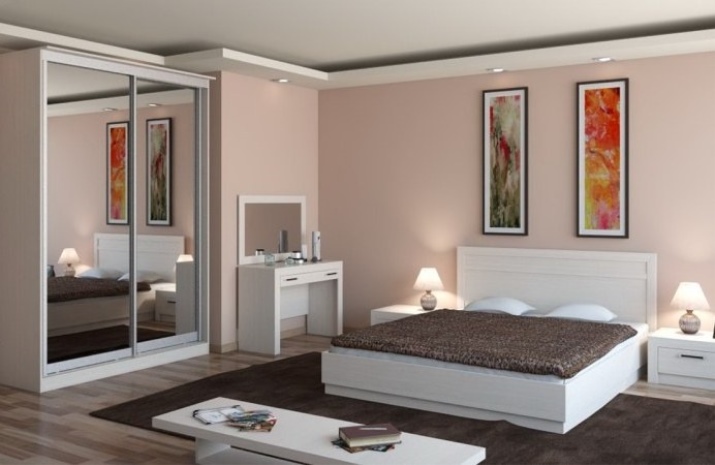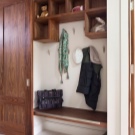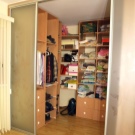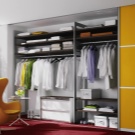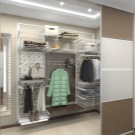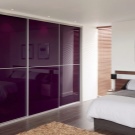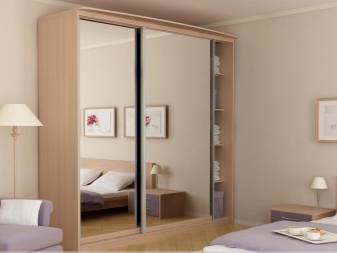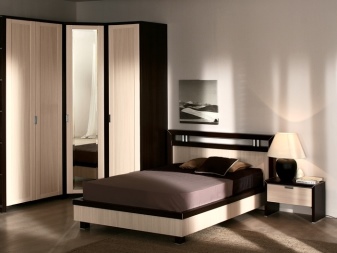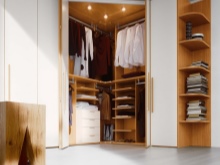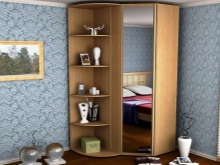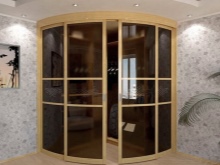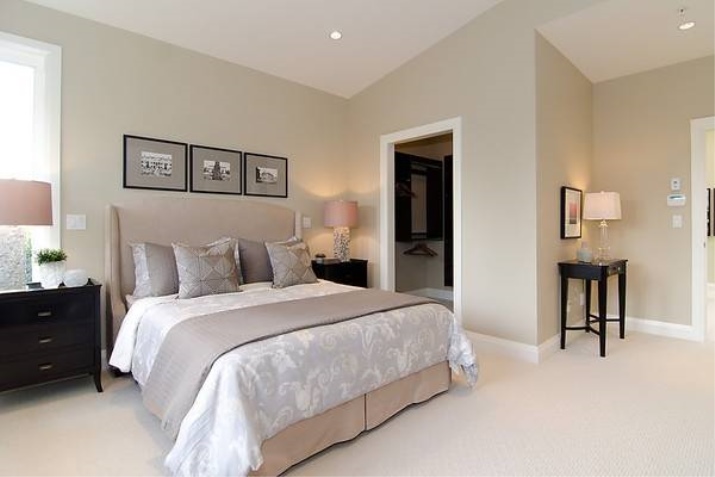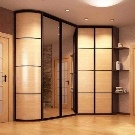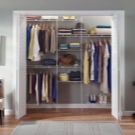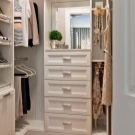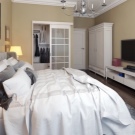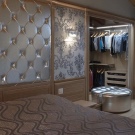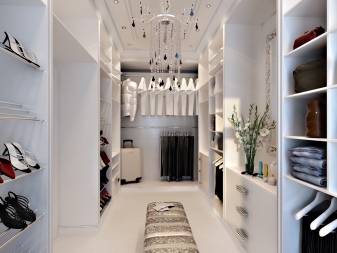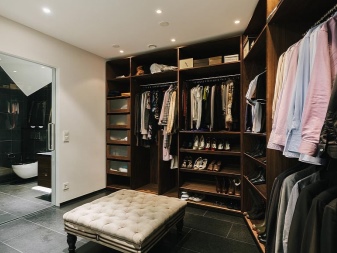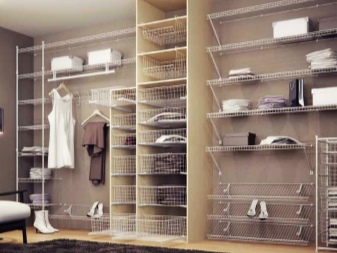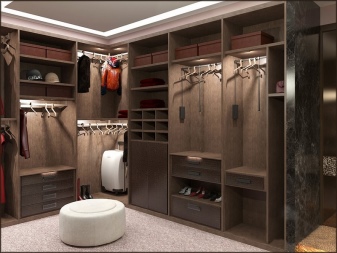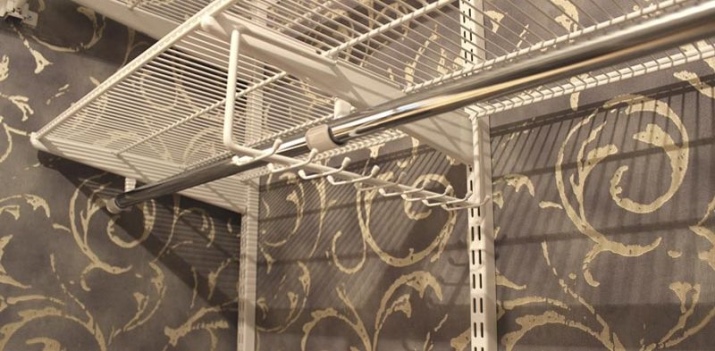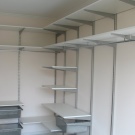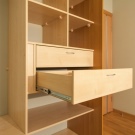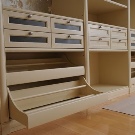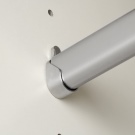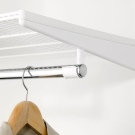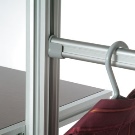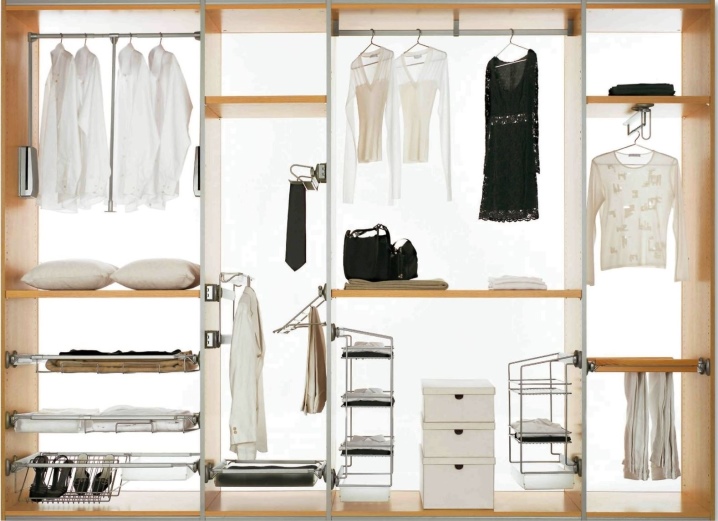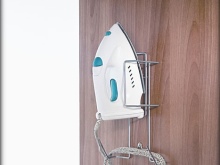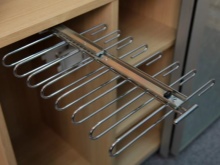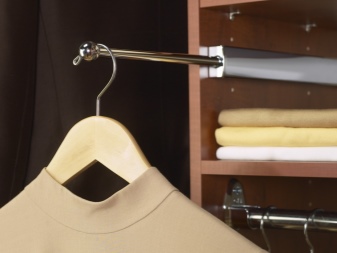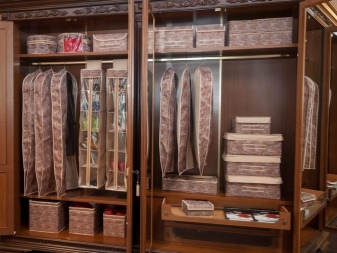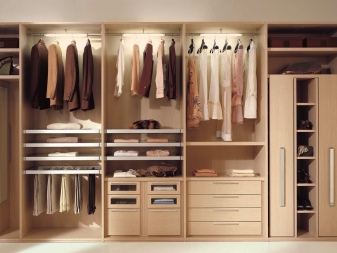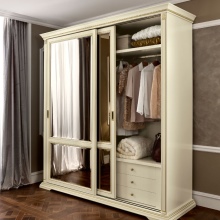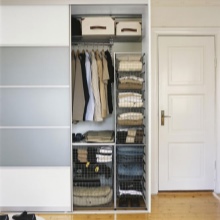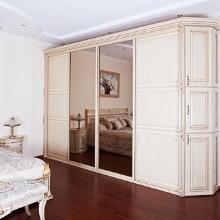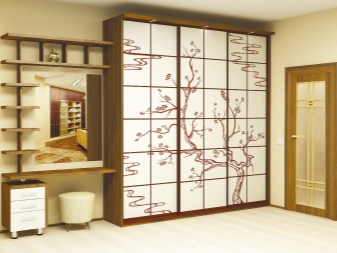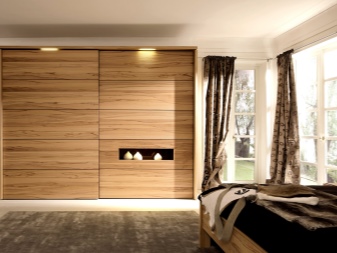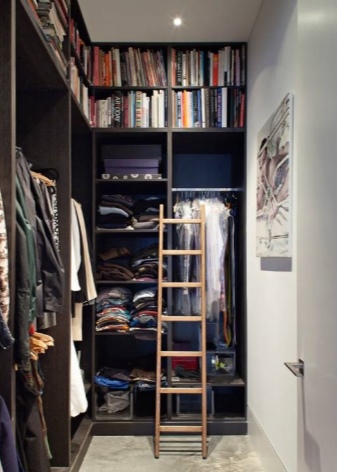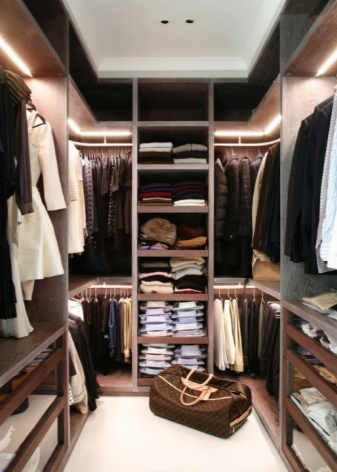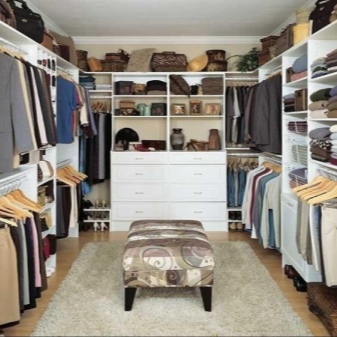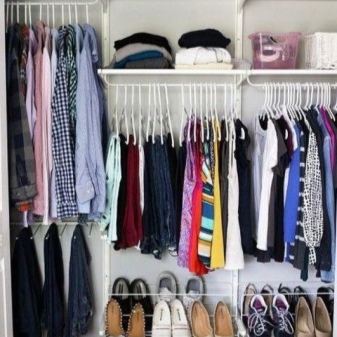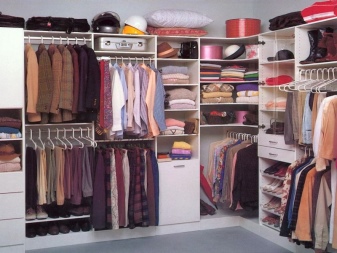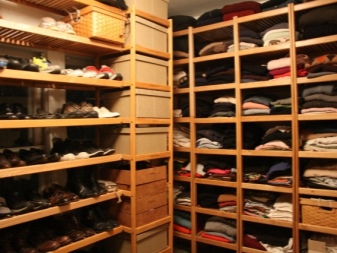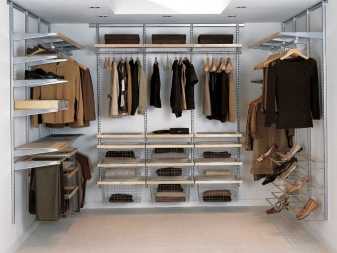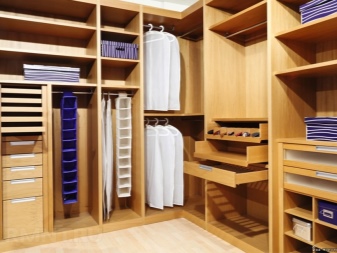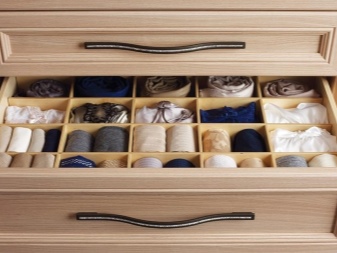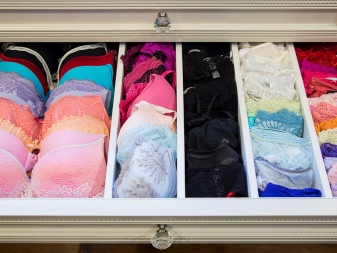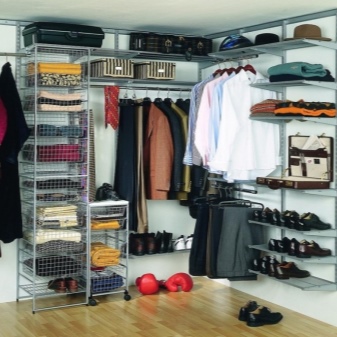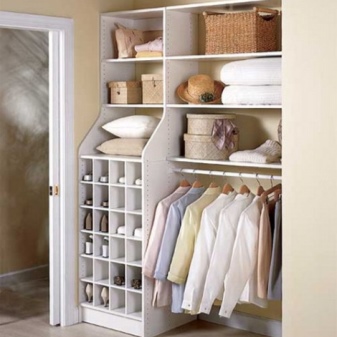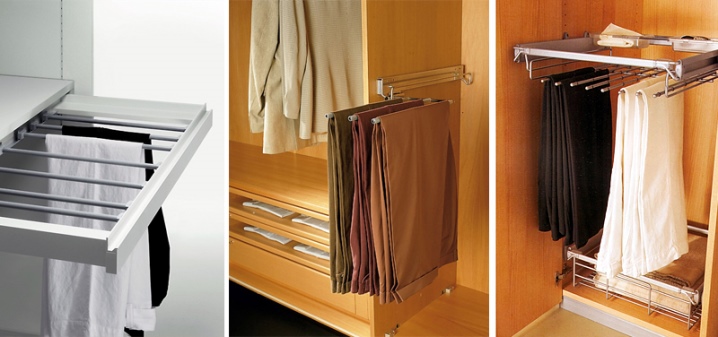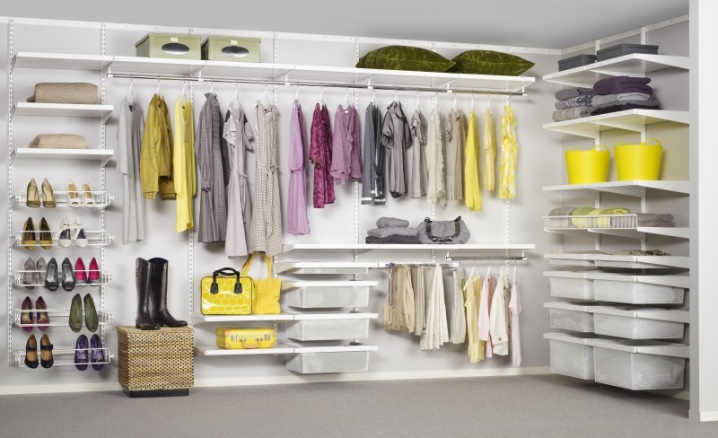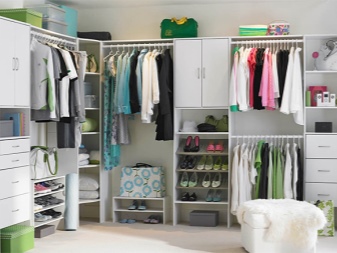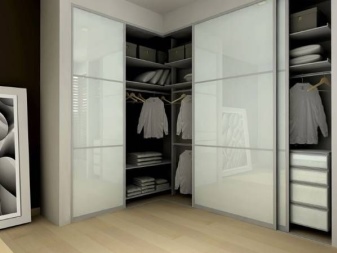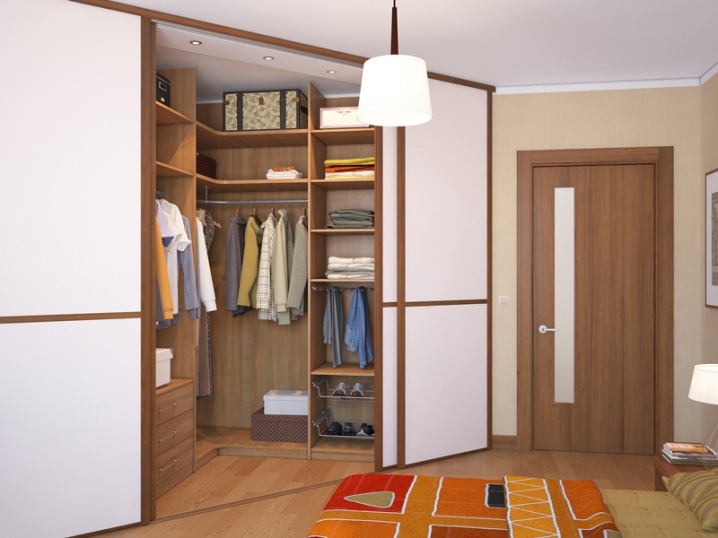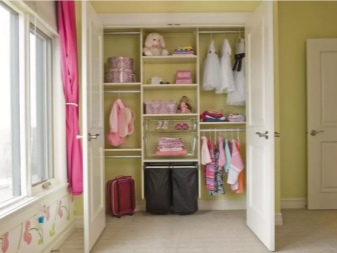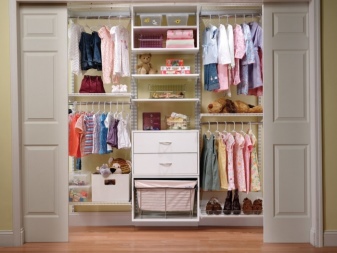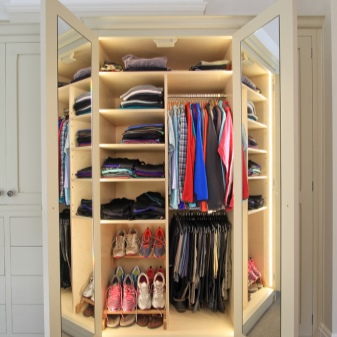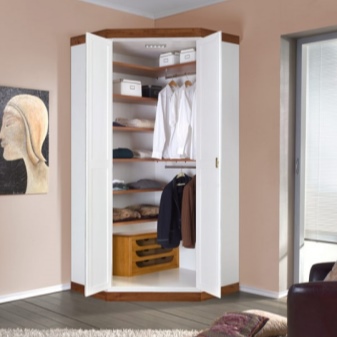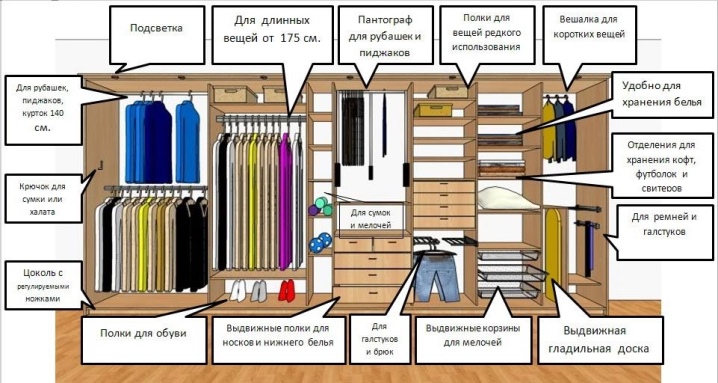Filling for cabinets and walk-in closets
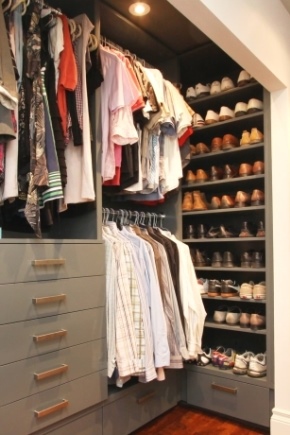
For proper storage of things, it is necessary to properly equip the relevant systems, including cabinets and walk-in closets. Let us consider in more detail the most practical and functional ways of filling storage systems.
Features and benefits
Each storage system, undoubtedly, has a number of not only features and advantages, but also disadvantages, which should be read immediately before purchasing a particular product and installing it in an apartment.
The advantages of the cabinets are visible to the naked eye - compactness, convenience, spaciousness. Almost any cabinet has all these properties, which allows you to store a large number of things inside, without cluttering up the space of the apartment.
A clear advantage is the division of the internal space into shelves for storing neatly folded items and into compartments for storing things in a horizontal position on the hangers.
But there are drawbacks to the cabinets - in spite of even the most compact dimensions, the wardrobe still occupy space in the room, sometimes not even small. And if for large apartments this is not critical, then in small rooms the reduction of space will be very noticeable.
Dressing room is called a small room - a room designed for storage. With proper interior equipment, the dressing room can not only fully replace the closet, but also help to free up space in the apartment.
The advantage of the dressing rooms, above all, lies in the large capacity, thanks to which you can hide from prying eyes not only clothes and small personal belongings, but also unnecessary equipment, large-sized dishes, and with sufficient space - even car wheels.
Types and location
Naturally, there is a wide variety of types of cabinets - models differ in height, width and depth.But surprisingly, the dressing rooms are also divided into several varieties and differ in the area of the room and its shape.
The most common and well known wardrobe - coupe, the main feature of which are sliding doors, saving some space. Doors on hinges move freely, but require careful treatment in order not to lose working capacity too soon.
The classic wardrobe, as well as the ordinary wardrobe, has a standard rectangular shape, which is quite suitable for quite spacious rooms, where space saving does not play a special role.
But for small apartments, where every square meter counts, an excellent option would be an angular model of the cabinet, which takes up little space, fits perfectly into any interior and saves space.
There are also options for corner dressing rooms, which, most often, are hand-crafted, since this form of additional space in an apartment is rarely constructed and made out by the developer.
In some apartments there are special rooms of a small area, which are often reserved for dressing rooms.To equip such a room, the built-in collapsible model of a dressing room is most suitable.
Most often, these rooms are located inside the bedroom, which is very convenient for gathering. But if there is no dressing room, you can always add an interior with a small closet where only the most necessary things will be stored.
Dressing room will be very useful in a private house, since it is in such living conditions there is an urgent need to store a large number of things. It is best to place the room in the same part of the house as the bedroom.
How to equip?
It is very important not only to arrange storage space, but also to fully equip it with any additional details that help maintain order and keep each thing in its place.
Some make wardrobes and build their own wardrobes using the appropriate parts and components. But sometimes already finished product needs appropriate internal equipment.
Let's take a closer look at what details may be needed for the internal filling of a particular storage system:
- Required shelves of different sizes, designed to store things when folded;
- Drawers made from the same material as the storage system itself can be quite practical detail, be it a wardrobe or a frame dressing room;
- Metal bar for storage on hangers;
- Corresponding fastenings for shelves and bars, as well as guides for the movement of boxes.
There are many accessories for cabinets and walk-in closets that will make storage more convenient and demarcate the space inside the cabinet. Accessories are divided into embedded and not embedded. We will consider in more detail each.
Built-in storage accessories:
- In addition to the bar, they also use a retractable thin hung for hangers, which, despite the external thinness of the design, is quite durable and reliable;
- Built-in fixture for iron;
- Different hanging baskets for storing any clothes, light shoes and accessories;
- Retractable trouser legs, which are a rectangular hanger with numerous thin jumpers;
- Sliding shoe organizers - perfect for storing shoes in cabinets.
Non recessed storage accessories:
- The most common and well-known accessory - a hanger, is almost a necessity in the closet;
- Covers and vacuum boxes for storing warm, bulky clothing are also not included in accessories;
- Popular are the dividers that help to delimit the space in the boxes;
- Various organizers for the boxes, the internal space of which is divided by special jumpers;
- Suspended organizers suitable for storing bags and small shoes.
The storage elements involved must be of high quality, durable and practical, because the filling for a wardrobe or dressing room is not chosen for a day or two, but for a long time. It is better not to save on quality, in order not to overpay afterwards, changing accessories and component storage systems.
Various kinds of accessories and fillers are not necessary, but in many respects they simplify life and stimulate maintenance of order in storage systems.
Internal filling
Before you buy a closet or equip a dressing room, you must determine the size of the room.And in the selection of the optimal size of the cabinet and filling for a dressing room can help ergonomics.
Let's take a closer look at its main features:
- The height of the cabinet may well be a couple of centimeters less than the height of the walls in the room, but for its stability it is necessary that the width of the cabinet be at least 56 centimeters. But even with such dimensions, it is best to fix the furniture attribute against the wall in order to avoid falling.
- The same applies to wardrobes, the height of shelves in which can reach the ceiling level, and the shelves themselves will need additional anchorage to ensure greater security. Now let's understand more about the internal content.
- The upper shelf of the closet or dressing room should be located at a distance of about 50 - 55 centimeters from the top of the product - with such an arrangement, the compartment will be spacious enough to store a large number of not so important things.
- The height of the distance between the other shelves, on which clothes folded in piles are usually stored, can be from 40 to 45 centimeters. Such dimensions allow you to equip the storage system with a large number of shelves, each of which may well be reserved for a certain type of clothing.
- You should be aware that cabinets and storage systems in the dressing rooms may also differ in depth, which in a certain way affects the size of the shelf. Let us consider in more detail the ratio of the depth and width of the shelves on the example of the comparative table.
|
Depth of storage system (mm) |
Narrow shelf width (mm) |
Standard shelf width (mm) |
Width of wide shelf (mm) |
|
300 - 400 |
- |
420 - 460 |
800 - 820 |
|
420 - 460 |
300 - 350 |
550 - 600 |
780 - 800 |
The standard height and width of the shelves are understandable, but many cabinets have rather narrow drawers and compartments and many simply do not understand what they are for. Everything is very simple! The compartments, which vary in height from 20 to 30 centimeters, are designed to store both underwear and bed linen.
Standard shelves for storing hats can be from 15 to 20 centimeters in height, and shoe boxes can be from 25 to 30 centimeters. High boots are best kept in a horizontal position, since special compartments for them are not provided.
- With a large space, a wardrobe or dressing room can have a special compartment for pants, the height of which varies between 12 and 15 centimeters, as well as drawers for storing socks and tights, about the same height.
Some closets or walk-in closets can be equipped with multi-level bars on which hangers are stored. Let us consider in more detail what height of the bar is needed for the storage of certain types of clothing:
- 170-80 cm: the height required for the storage of long coats, raincoats, fur coats and winter down jackets;
- 140-150 cm: the height required for storing long women's dresses, as well as outerwear, the length of which reaches the middle of the calf;
- 100-110 cm: the height required for the storage of short outerwear, jackets, shirts and blouses.
It is worth noting that storage systems in the dressing rooms can also be equipped with doors, since clothes made of delicate fabrics that require special handling should be kept behind closed doors in order to protect the product as much as possible from any possible external influence.
Interesting design solutions
Very nice looks corner wardrobe with white glossy doors. The model has all the necessary internal equipment, multi-level rods, many drawers and shelves for storing diverse items.
It is noteworthy that the model is equipped with a corner open rack,which can serve as an element of decor - for storing various interior items, and a functional part - for storing family albums and books.
A striking example of the competent and practical use of room space - personally made the corner dressing room. The doors are made of matte white panels in brown cut, thanks to which they look beautiful and complement the interior quite well.
The dressing room is equipped with bars, for hanging, both long and short clothes. There are drawers and baskets for shoes. Top shelves are designed for storing shoes, bags and suitcases, and the standard - for clothes and linen.
A stylish classic wardrobe can be no less practical and roomy than any dressing room. This model is equipped with a backlight system, which greatly facilitates the search for things at night, without the need to turn on additional lighting.
In the closet there are standard shelves for clothes, upper shelf for clothes and other attributes that are rarely used, bars for short clothes and trousers, as well as a shoe storage device.Among the disadvantages of this model can be identified the absence of drawers and rods for storing long things.
